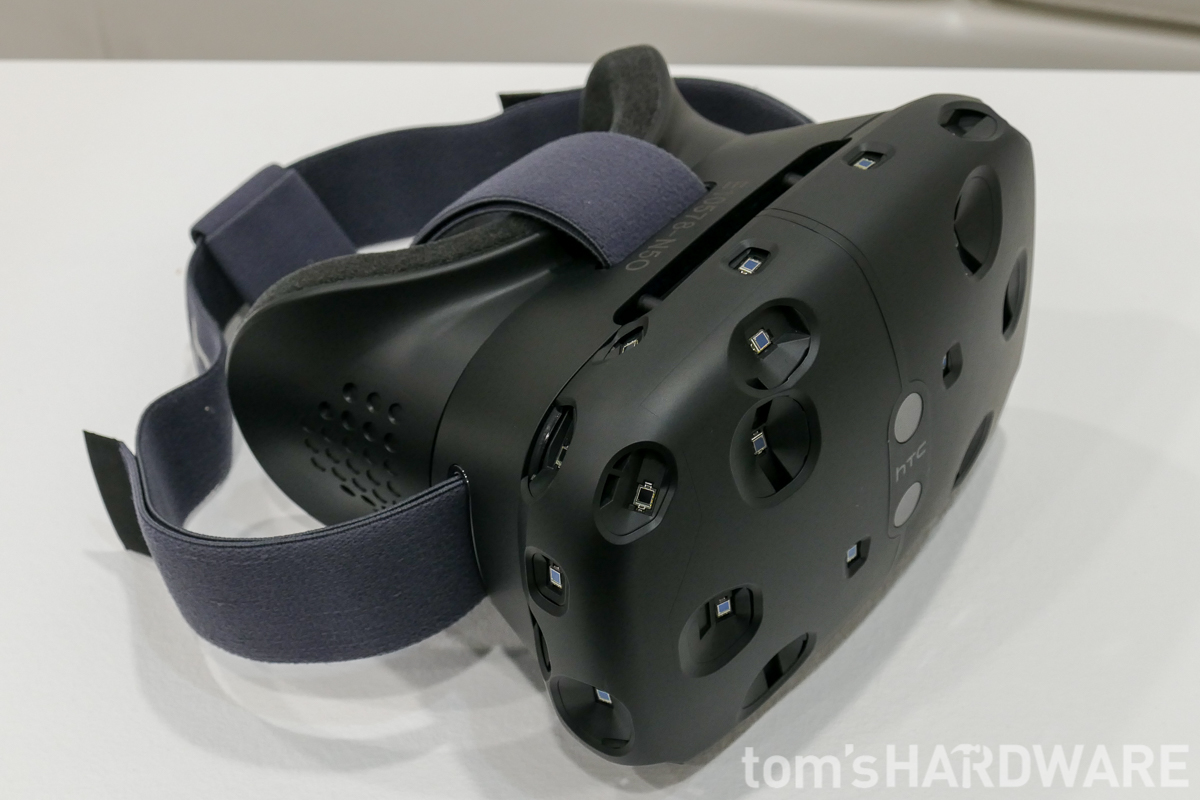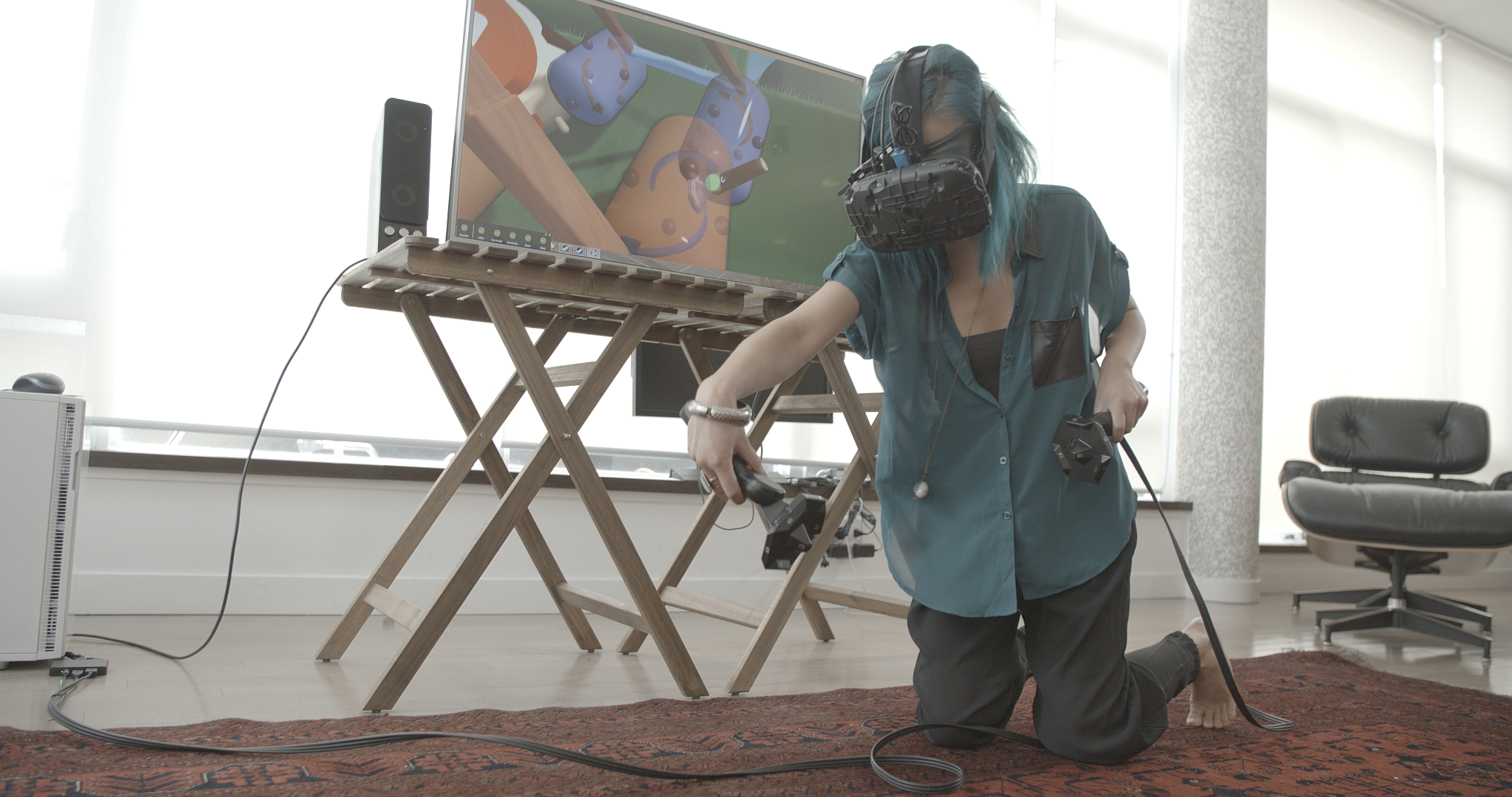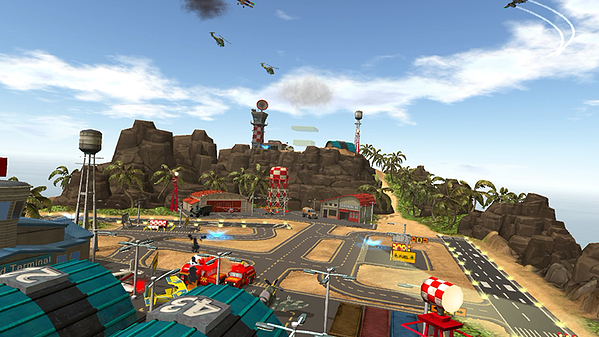HTC Vive At PAX Prime Shows New Demos, Wireless Controllers: Hands On (Updated)
Since its reveal at GDC and Mobile World Congress earlier this year, HTC and Valve's joint project, the Vive virtual reality headset, has made an appearance at trade shows as well as to the public with its HTC Vive World Tour. At PAX Prime, the Vive was used in a handful of booths at the show as well as a small venue outside the convention center for passers-by to try out.
This time around, there were a few brand new demos available, but more importantly, there were two hardware upgrades visible in the new prototype.
Going Wireless
At GDC, the Vive had a web of wires stemming out from the headset and controllers. The wires were still visible to the latest version of the headset, but the controllers were wireless. The controllers still retain the same look from their GDC debut, but where the wires at the end of each controller were replaced there was just a small wristband, similar to the one used on a Wii remote.
In terms of performance, the wireless controller, for the most part, was able to stay on par with its wired predecessor. Latency was hardly noticeable, and being unrestrained with no wires meant I could move faster and more freely. However, it wasn't all gravy as there were two new issues that sprung up.
At two demos, one of the controllers would suddenly stop tracking in the space. The other one was still working and moving around, but considering that some of the demos required both controllers, it impeded the entire experience. Instead of waiting around for the controller glitch to reset itself, those chaperoning that demo would just restart the entire game.
There's also the problem of battery life. J.B. McRee, the senior manager of product marketing at HTC, said that the current version of wireless controllers use two CR123A batteries. While the exact timing of battery life is unknown, the team was instructed to change the batteries every 45 minutes to ensure that the controllers didn't fail in the middle of the demo.
As it turns out, that didn't work, as the controllers conked out during my playthrough with HTC, and I was their first meeting of the day. The same problem occurred when I tried it at Nvidia's booth. Switching the batteries was somewhat quick, a task that varied between three to five minutes. In a VR demo, that time quickly flies, but if the player is waiting for input and staring into a blank digital space, it can feel like an eternity.
Get Tom's Hardware's best news and in-depth reviews, straight to your inbox.
Better Lighthouse
You wouldn't notice the other change unless you looked around the room before or after the demos. The tracking sensors, called "Lighthouse," were redesigned three months ago. At GDC, they were larger and had red lights as indicators. The ones shown at PAX were smaller and had green lights to indicate that the two sensors on opposite corners of the room were on and synced.
The overall size of each one was also smaller, yet they still offered a larger field of view. Like the controllers, the Lighthouse sensors are still in development, so there's a significant possibility that the specs will change again before the final release.
New Experiences
To go along with the new controllers and sensors, there were a small batch of new demos available to highlight Vive and its capabilities. At the top of the list was Cloudhead Games's Blink technology, which allows players to travel in large virtual spaces by simply using an in-game marker to indicate a desired location.
Nvidia also had a bow and arrow demo that simulated grabbing an arrow from your back, as if it was stored in an invisible quiver. The arrow would then fit into the slot on the bow, and a series of targets were available for shooting, including moving targets in the form of rising balloons.
It was a fun demo to play, but the problem was that it was hard to aim with it. In the real world, the bow would be readied close to the face so its user could easily find a target and correctly aim at it. With the Vive, that wasn't possible because of the HMD's wide physical profile. Instead, I had to adjust my aim because the arrow was pulled back at a strange angle so that I didn't constantly hit the HMD with the controller.
By far, HTC has the biggest amount of new content to offer with three demos. The first was called Fantastic Contraption, where the player had to build a machine with various structural and moving parts to create a vehicle that would carry an orb across the platform and to the finish line. It demonstrated the use of both controllers in a construction setting, allowing me to stretch and shrink the size of each wheel and strut.
Building the vehicle was a process of trial and error, but I found myself deeply immersed in it because I walked around my creation instead of walking through it. I didn't even realize that I was walking around in large circles around the object until I was told about it at the end of the session.
Next up was Final Approach, an airport management game where I had to guide various planes and helicopters to an appropriate runway or helipad to refuel and then take off again. You have to deal with other factors such as mechanical mishaps, portions of the fueling station catching on fire, and seagulls blocking the runway while keeping track of the constant comings and goings of aircraft.
For most of the game, you assume a god-like view of the entire airport. As planes circle overhead, you must use the trigger on the controller to lock on to them and then guide them to the correct runway for landing. There's also the option to zoom in as if you were standing on the tarmac to deal with various emergencies. It tested my patience in the face of a growing number of planes needing to land, as well as the constant nagging of emergency vehicles down below. (This isn't a demo for the easily frustrated.)
Introduced at The International, the high-paying eSports tournament for Dota 2, was the Secret Shop demo. It basically was a small tour of the Shopkeeper's house. He would go in and tell you to feel free to explore the various trinkets and secrets of the home, and then leave you in the dark, creepy house. You could zoom in to select places such as the shelf and tables.
I could also use the controller to interact with other objects such as a jack-in-a-box or a small dragon-like creature in the corner that would follow the light held in my "hand." One portion in particular terrified me as I zoomed in next to a glowing sheet of paper, only to quickly back out due to a massive spider unexpectedly approaching me.
The VR Frontier
Just like Oculus, which was also at the show, showcasing its near-final version of the Rift headset and Half-Moon Oculus Touch prototype, there's still work needed on the Vive before its release. HTC and Valve said that a very limited number of commercial headsets would be available this year, with the full release coming in the first quarter of 2016.
This puts the Vive in a head-to-head contention with the Rift, which plans to release around the same time. Sony's VR entry, Morpheus, has a more vague release window of sometime in the first half of 2016. As for Razer's OSVR plans, the next iteration of the Hacker Development Kit is coming in the latter half of October 2015, with pre-orders starting on October 1.
Update, 9/8/2015, 12:30 p.m. PDT
: We incorrectly stated that the red and green lights in the "Lighthouse" sensors were lasers to track movement. They are in fact indicators, and the actual lasers for tracking are invisible, IR lasers. The correction has been made in the story.
Follow Rexly Peñaflorida II @Heirdeux. Follow us @tomshardware, on Facebook and on Google+.
Rexly Peñaflorida is a freelance writer for Tom's Hardware covering topics such as computer hardware, video games, and general technology news.


